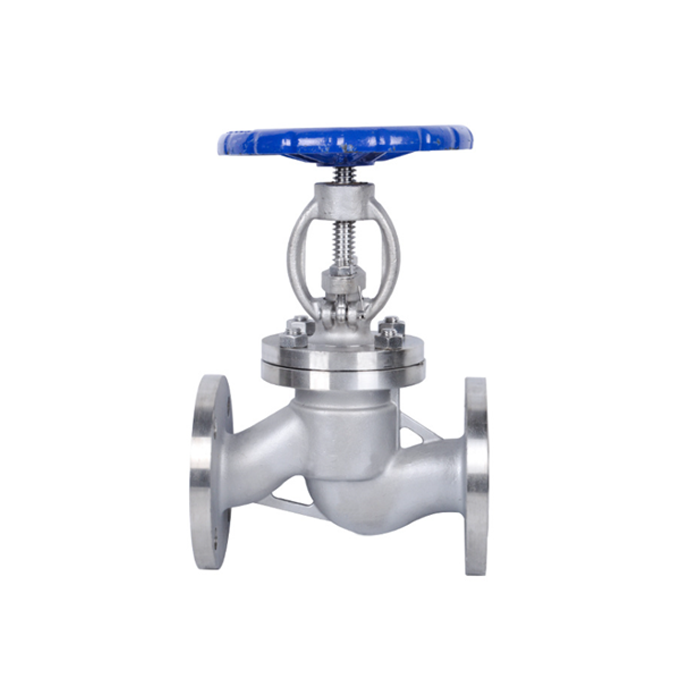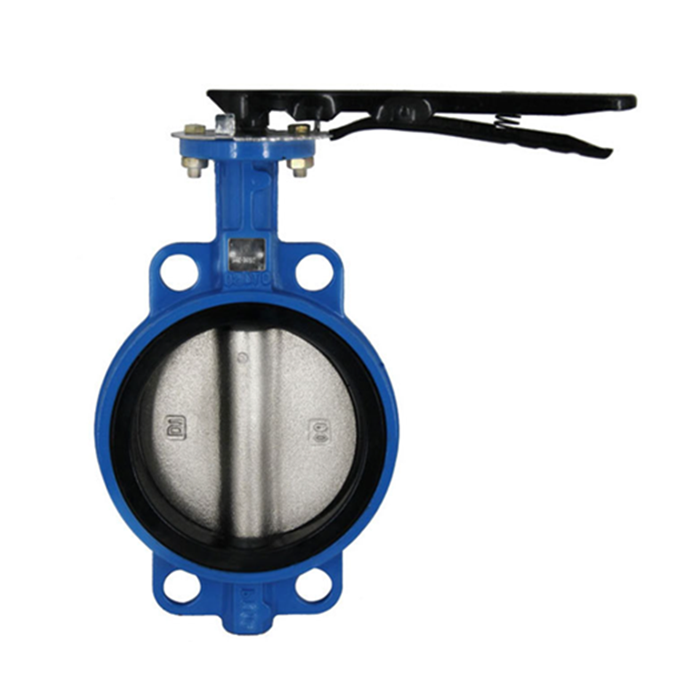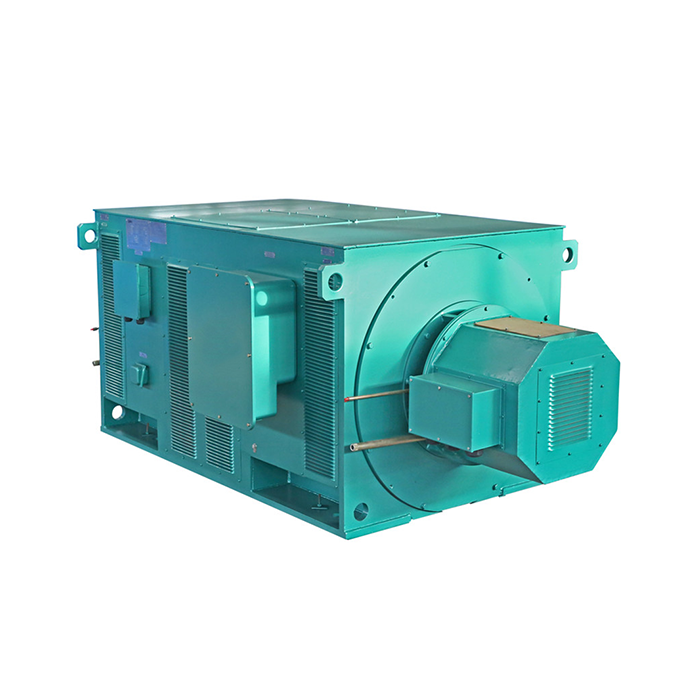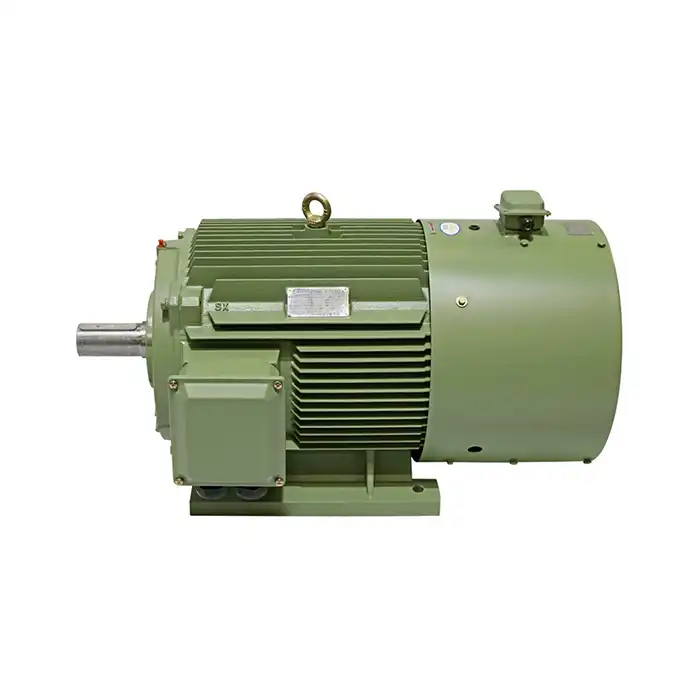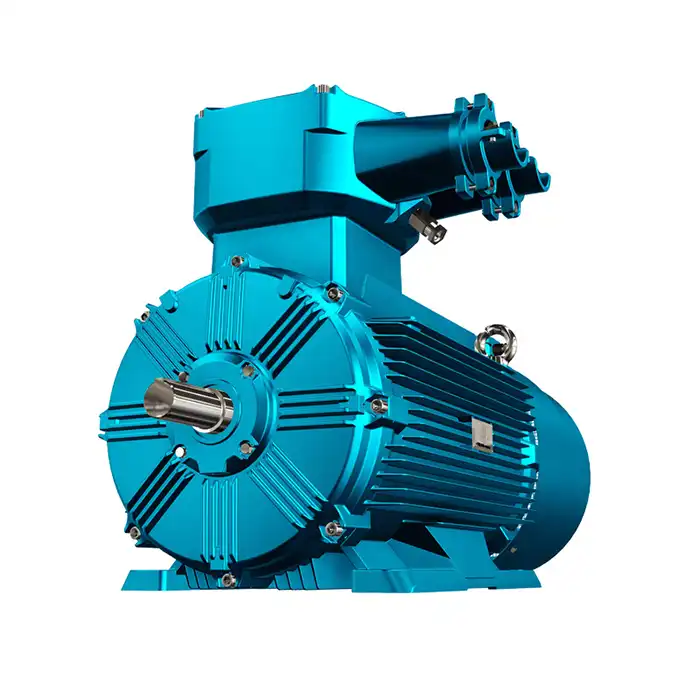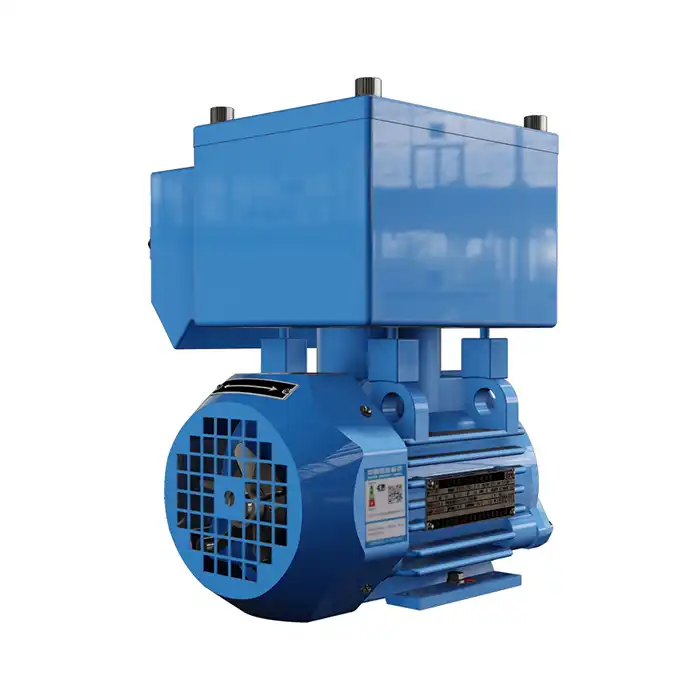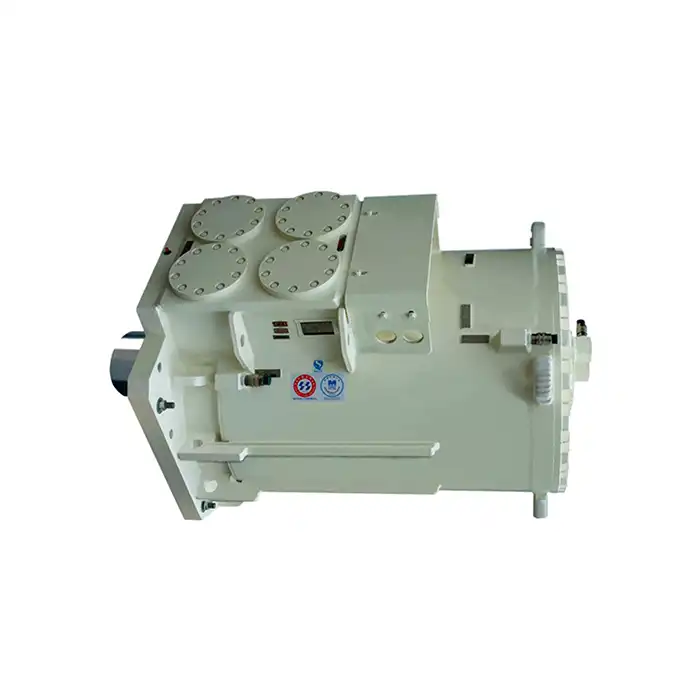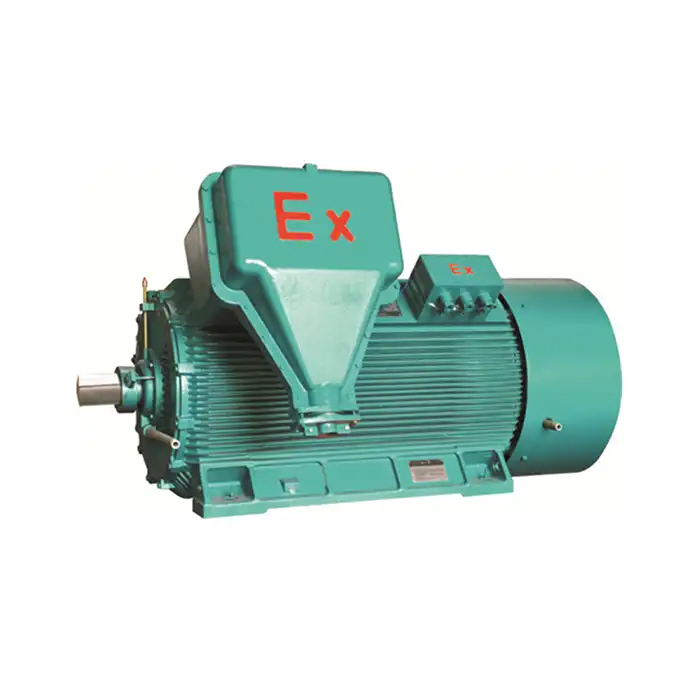How Does Supply Voltage Unbalance Affect LV Induction Motor Performance?
Low voltage (LV) induction motors are vital components in many industrial applications. However, their performance can be significantly impacted by supply voltage unbalance. This article examines the effects of voltage unbalance on LV induction motor performance, discussing causes, quantifying impacts, and suggesting mitigation strategies.
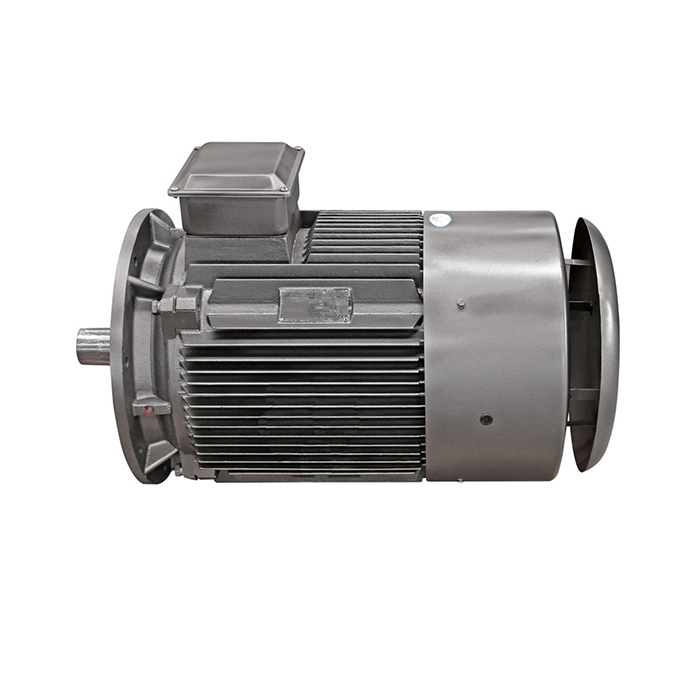
Series:YE3
Frame number: 80-450
Power range:0.75-1000kW
Protection level:IP55
Energy efficiency class: IE3
Voltage range: 380V,400V,415V,660V, etc.
Application:can be used in various fields of the national economy, such as machine tools,water pumps,fans,compressors,and can also be used in transportation, mixing, printing, agricultural machinery, food and other occasions that do not contain flammable, explosive or corrosive gases.
Certificate: international standard IEC60034-30 "Efficiency Classification of Single-speed Three-Phase Squirrel Cage Induction Motors".
Advantage:The high quality of the electric motor guarantees high operational reliability.
Others: SKF, NSK, FAG bearings can be replaced according to customer requirements.
Causes and symptoms of voltage unbalance
Common causes of voltage unbalance
Voltage unbalance in three-phase power systems can stem from various sources:
1. Uneven distribution of single-phase loads across the three phases: When single-phase loads are unevenly distributed across the three phases, it can cause voltage imbalances. This typically occurs when large loads are concentrated on just one or two phases, resulting in an unequal voltage distribution.
2. Faulty transformers or power factor correction equipment: Faulty transformers or malfunctioning power factor correction equipment can contribute to voltage unbalance by disrupting the smooth distribution of power across the three phases. These issues often lead to uneven voltage levels, affecting the overall system stability.
3. Asymmetrical impedances in power distribution systems: Asymmetrical impedances, such as variations in line resistance or reactance, can cause an imbalance in voltage. Differences in impedance between the phases can create voltage disparities, leading to inefficiencies and possible damage to equipment.
4. Open circuit in one phase of a three-phase circuit: An open circuit in one phase of a three-phase system can result in voltage unbalance. When one phase is disconnected or has an open circuit, the remaining two phases will carry an unequal load, causing voltage fluctuations and imbalances that can harm the system and connected equipment.
Recognizing voltage unbalance symptoms
Identifying voltage unbalance is crucial for maintaining optimal LV induction motor performance. Common symptoms include:
1. Excessive motor vibration and noise: Unbalanced voltage can cause uneven motor operation, leading to vibrations and abnormal noises, which may indicate mechanical issues.
2. Increased motor temperature: Voltage imbalance often results in higher current flow, causing the motor to overheat and potentially damage its components.
3. Reduced motor efficiency and output power: Voltage imbalance reduces the motor's ability to operate efficiently, decreasing its overall performance and output power.
4. Premature motor failure: Continuous operation under voltage unbalance conditions can significantly shorten the motor's lifespan, leading to premature failure and costly repairs.
Measuring voltage unbalance
Voltage unbalance is typically calculated using the following formula:
Percentage Voltage Unbalance = (Maximum deviation from average voltage / Average voltage) × 100
For example, if the measured line-to-line voltages are 460V, 467V, and 450V, the average voltage is 459V. The maximum deviation from the average is 9V. Thus, the voltage unbalance is (9/459) × 100 = 1.96%.
Quantifying performance impact: efficiency and lifespan
Effects on motor efficiency
Voltage unbalance can significantly reduce the efficiency of LV induction motors. Studies have shown that for every 1% increase in voltage unbalance:
- Motor efficiency decreases by approximately 0.5%
- Motor temperature rises by about 3-4°C
- Full-load current increases by 6-10%
Impact on motor lifespan
The increased heating and vibration caused by voltage unbalance can drastically shorten motor life. Research indicates that:
- A 3.5% voltage unbalance can reduce motor life by 50%
- A 5% voltage unbalance can reduce motor life by up to 75%
Performance degradation across different load conditions
The impact of voltage unbalance on LV induction motor performance varies with load:
- At light loads, the effects are less pronounced
- At full load, the impacts are most severe
- Motors operating above rated load are particularly vulnerable to voltage unbalance effects
Mitigation strategies for voltage unbalance issues
Regular monitoring and maintenance
Implementing a proactive approach to voltage unbalance management involves:
- Regular voltage measurements across all three phases
- Periodic thermal imaging of motors and electrical connections
- Vibration analysis to detect early signs of motor stress
Load balancing techniques
Balancing loads across phases can significantly reduce voltage unbalance:
- Redistribute single-phase loads evenly across all three phases
- Use three-phase loads wherever possible
- Implement automatic load-balancing systems for dynamic environments
Power quality improvement devices
Several devices can help mitigate voltage unbalance:
- Static VAR compensators
- Active harmonic filters
- Voltage regulators
- Phase advancers
Motor derating and oversizing
When voltage unbalance cannot be fully eliminated, consider:
- Derating motors according to NEMA guidelines
- Using oversized motors to handle increased heating and stress
- Implementing motor current imbalance protection devices
Conclusion
Supply voltage unbalance can substantially impact the performance and lifespan of LV induction motors. By understanding the causes, recognizing the symptoms, and implementing appropriate mitigation strategies, industrial facilities can maintain optimal motor performance, improve energy efficiency, and extend equipment life. Regular monitoring, proactive maintenance, and the use of power quality improvement devices are key to managing voltage unbalance issues effectively.
FAQ
1. What is considered an acceptable level of voltage unbalance for LV induction motors?
Generally, voltage unbalance should be kept below 1% for optimal motor performance. NEMA standards allow up to 3% unbalance, but recommend derating the motor if unbalance exceeds 1%.
2. Can voltage unbalance cause immediate damage to an LV induction motor?
While severe voltage unbalance can cause immediate damage, most issues develop over time due to increased heating and stress on motor components. However, prolonged operation under unbalanced conditions can lead to premature failure.
3. How often should voltage balance be checked in an industrial setting?
It's recommended to check voltage balance at least quarterly, or more frequently in environments with fluctuating loads or known power quality issues. Continuous monitoring systems can provide real-time data for critical applications.
Partner with XCMOTOR for Reliable LV Induction Motors
At XCMOTOR, we understand the critical role that LV induction motors play in your operations. Our motors are designed to withstand varying power quality conditions, including minor voltage unbalances. With our expertise in motor design and manufacturing, we offer solutions that prioritize efficiency, reliability, and longevity. Don't let voltage unbalance issues compromise your productivity. Choose XCMOTOR for high-quality, resilient LV induction motors that keep your operations running smoothly.
Contact us today at xcmotors@163.com to discuss how our LV induction motor solutions can meet your specific needs. As a trusted LV induction motor manufacturer, we're committed to powering your success with superior motor technology.
References
- Johnson, M. (2020). "Impact of Voltage Unbalance on Low Voltage Induction Motor Performance." IEEE Transactions on Industry Applications, 56(4), 3456-3465.
- Smith, A. et al. (2019). "Mitigation Strategies for Voltage Unbalance in Industrial Power Systems." Journal of Power Electronics, 19(3), 789-801.
- Garcia, L. and Rodriguez, P. (2021). "Efficiency Degradation in LV Induction Motors Due to Supply Voltage Unbalance." Energy Conversion and Management, 228, 113671.
- Brown, K. (2018). "Thermal Effects of Voltage Unbalance on Induction Motor Insulation Systems." IEEE Electrical Insulation Magazine, 34(5), 8-14.
- Zhang, Y. and Wang, H. (2022). "Advanced Monitoring Techniques for Detecting Voltage Unbalance in LV Motor Applications." Sensors, 22(8), 2987.
- Anderson, R. (2017). "Economic Analysis of Voltage Unbalance Mitigation in Industrial Facilities." Energy Policy, 108, 454-463.



